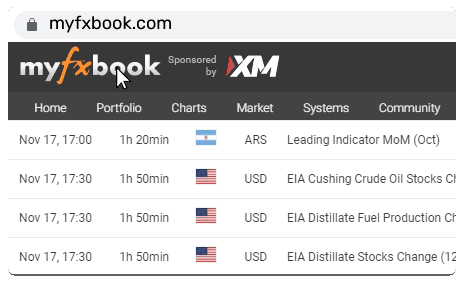Scam Alert? 3 Broker Red Flags to Check in 60 Seconds

Imagine this. One careless click and your balance feeds into the £1.17 billion lost to payment fraud in the UK. That's exactly what many experienced in 2024.
UK Finance reports a record 3.31 million fraud cases in Britain's financial system in 2024, up 12% year-on-year. That's the environment both new and seasoned traders step into daily.
Scams are overwhelmingly digital. Last year, 70% of authorised push payment fraud began on social media, and regulators have scaled up their response. In 2024, as much as 29% of total fraud losses were linked to these platforms. In just one quarter, the FCA forced 3,273 financial promotions to be changed or pulled and issued 528 warnings about unauthorised firms, 11% were clones.
Choosing a broker is about safeguarding your money. Below are three red flags to help you separate risky providers from reputable ones, plus practical steps to protect your funds before your first trade.
Red Flag #1: Missing or Misleading Regulation
If a broker isn't authorised for the exact products you plan to trade, you forfeit core protections. Avoid this by checking the firm on the official regulator's register before funding your account, and confirm the permissions match the services advertised. If the firm isn't listed, or details don't match, stop and don't deposit.
Extra comfort comes from participation in recognised compensation schemes or from additional client-fund insurance. These don't cover trading losses, but they can protect you against firm failure or custody risks.
This isn't hypothetical. In Q4 2024, the FCA issued 584 alerts about unauthorised firms and individuals. That same quarter, 3,697 promotions were amended or withdrawn. One cautionary example is from May 2024, the FCA secured a six-year sentence for Guy Flintham, who ran an unauthorised investment scheme that took about £19 million from roughly 240 investors.
The bottom line is verify first, and then fund. Use the official register, confirm the firm and permissions, and only use the contact details listed there. If anything is off, treat it as a full stop and choose another broker.
Red Flag #2: Opaque Costs and Too‑Good‑to‑Be‑True Promises
A headline “zero spread” means little if costs reappear as withdrawal fees, inactivity charges, or other fine‑print add‑ons. Be cautious with claims like “risk‑free trading,” trading bonuses, or guaranteed returns.
In the UK, promotions must be fair, clear, and not misleading. For CFD providers, monetary and non‑monetary inducements that push retail clients to trade are banned.
Regulators frequently highlight unclear fees, e.g., “no win no fee” without explaining the fee. The Advertising Standards Authority has also acted against unrealistic payoff claims. In January 2025, it upheld a ruling against an investment ad touting 10–30% returns without solid evidence, proof that big numbers without context mislead.
If a promotion hints at easy, guaranteed profits, or leans on perks reputable firms can’t legally offer, walk away. If costs are buried or vague, pick a different provider.
Red Flag #3: Poor Transparency and Weak Support
If it’s hard to find who owns the company, where client funds are held, or how complaints are handled, consider it a warning.
ESMA’s 2023 mystery shopping on marketing materials found risk warnings were often visually downplayed: 60% used smaller font, 14% different colours, and 13% hid risk text in footnotes or extra layers.
The risks of poor communication are real. In Australia, the Federal Court found two CFD brands engaged in systemic unconscionable conduct using high‑pressure tactics and misleading messaging, contributing to losses exceeding AUD 83 million.
Look for clear ownership and a physical address, a published complaints process, an execution policy, and a readable client agreement. Test support at different times and ask direct questions about withdrawals, account closures, and negative balance protection. If support is hard to reach, answers are vague, or risks/fees are visually minimised next to the sales pitch, move on.
How to Identify a Broker You Can Trust
A credible broker leaves verifiable traces. Start with regulation: search for the firm on the official register of the authority it cites (e.g., FCA, FSCA, FSC). Confirm permissions match the instruments you’ll use, and cross‑check the contact details against the broker’s site.
Next, assess pricing transparency. If key fees are hidden or headlines don’t match the small print, that’s a warning sign.
Finally, confirm ownership clarity and support quality. Try live chat and email at different times and note the speed and substance of responses.
Quick checklist:
- Verify the licence on the official register and match the contact details.
- Ensure all platform and website costs are clear and consistent.
- Test support and review the published complaints process before depositing.
Ultima Markets: A Broker Built on Trust
Ultima Markets UK Ltd satisfies the checklist in practice. It is authorised and regulated by the Financial Conduct Authority, and its licence and status can be verified on the FCA Financial Services Register.
Ultima Markets is building a dedicated UK client website and expects to onboard UK clients under FCA rules in 2026.
UM communicates fees and key terms in plain language, and makes ownership and contact channels easy to find. This transparency helps eliminate red flags, placing Ultima Markets among the brokers you can trust.
Disclaimer
This content is provided for informational purposes only and does not constitute, and should not be construed as, financial, investment, or other professional advice. No statement or opinion contained here in should be considered a recommendation by Ultima Markets or the author regarding any specific investment product, strategy, or transaction. Readers are advised not to rely solely on this material when making investment decisions and should seek independent advice where appropriate.Open Dem





















